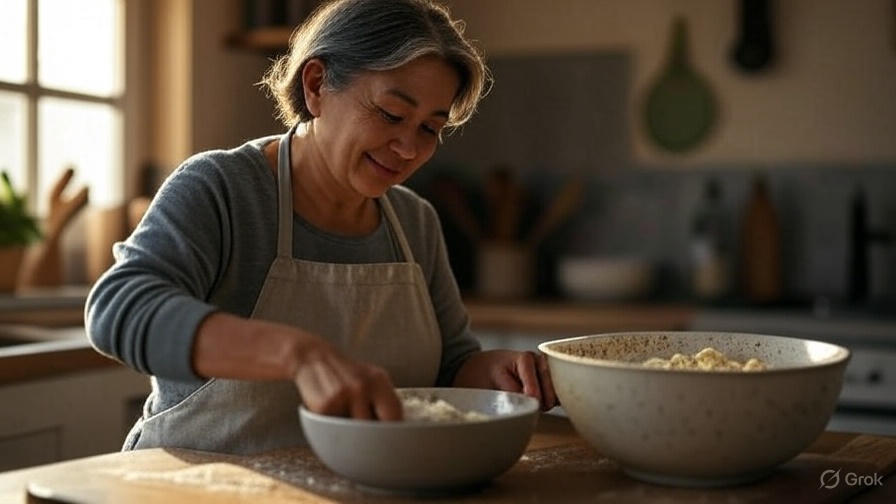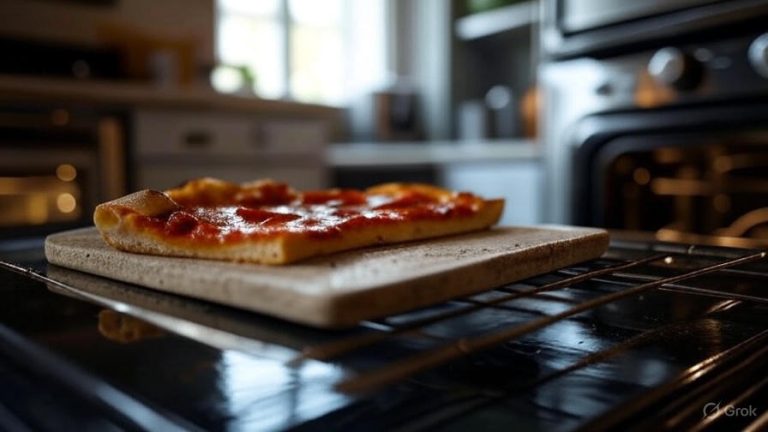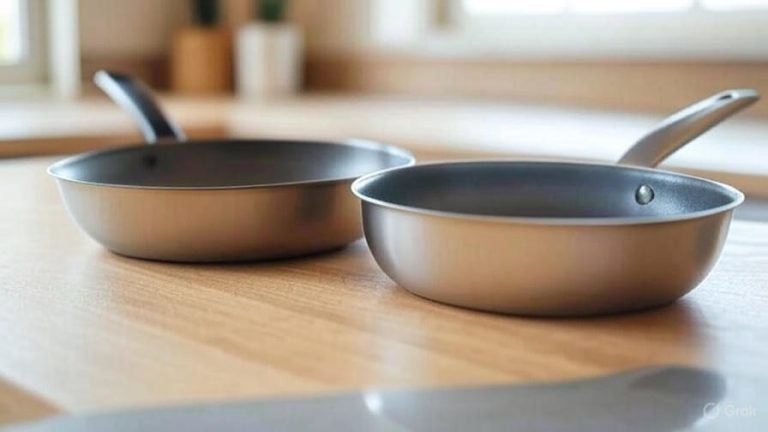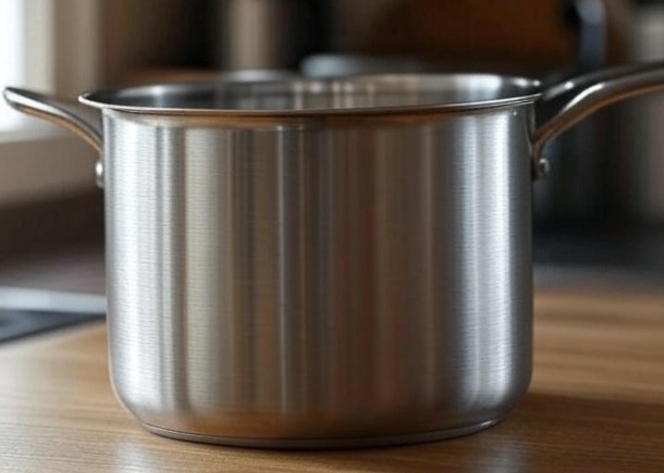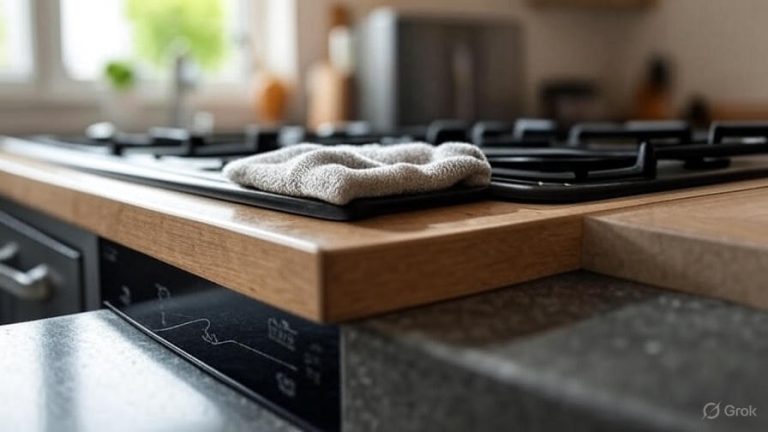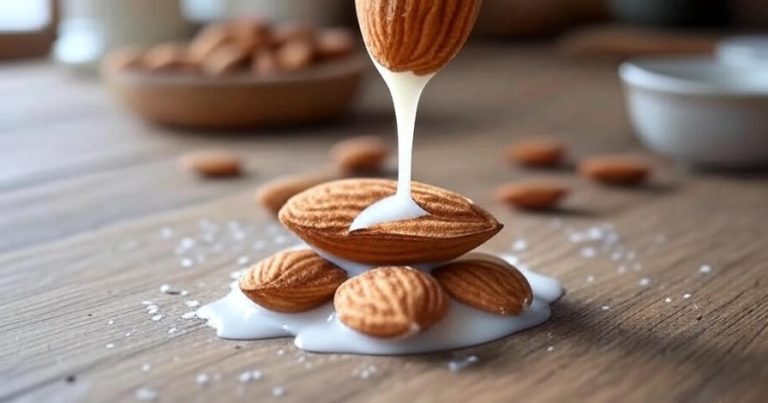How to Make a Cake from Scratch?
Making a cake from scratch transforms your kitchen into a bakery and fills your home with the irresistible aroma of freshly baked goodness. This complete guide walks you through every step of creating perfect homemade cakes, from basic vanilla sponge to elaborate layer cakes that rival professional bakeries.
The Foundation of Great Cake Making
Creating exceptional cakes from scratch begins with understanding the fundamental principles of baking. Unlike cooking, where you can adjust ingredients on the fly, baking requires precision, patience, and proper technique. Every ingredient serves a specific purpose, and the way you combine them determines whether your cake rises beautifully or falls flat.
The magic of cake making lies in the chemical reactions between ingredients. Flour provides structure, eggs bind everything together, sugar adds sweetness and moisture, and leavening agents create that perfect fluffy texture. When you master these basics, you gain the confidence to experiment with flavors and create your own signature recipes.
Home baking offers complete control over ingredients, allowing you to avoid preservatives and artificial additives found in store-bought cakes. You can adjust sweetness levels, incorporate organic ingredients, and create custom flavors that reflect your personal taste preferences.
Essential Equipment for Cake Making Success
Before diving into recipes, gather the right tools for consistent results. A digital kitchen scale ensures accurate measurements, while a stand mixer or hand mixer provides the power needed to cream butter and whip eggs properly. Quality matters when it comes to mixing equipment, as proper aeration is crucial for light, fluffy cakes.
Invest in good-quality cake pans in various sizes. Standard 9-inch round pans work for most recipes, but having 8-inch pans, loaf pans, and sheet pans expands your options. Non-stick pans make removal easier, though proper greasing and flouring techniques work with any pan material.
A reliable oven thermometer helps ensure accurate baking temperatures. Many home ovens run hot or cold, and even a 25-degree difference can affect your cake’s outcome. Position your oven racks in the center for even heat distribution, and avoid opening the door during the first 30 minutes of baking.
Wire cooling racks allow air to circulate around your finished cake, preventing soggy bottoms. Rubber spatulas help fold ingredients gently without deflating the batter, while a bench scraper makes transferring batter and cleaning easier.
Understanding Cake Ingredients and Their Roles
Flour forms the backbone of every cake. All-purpose flour works for most recipes, providing moderate protein content that creates tender crumb without being too delicate. Cake flour contains less protein, resulting in more tender cakes, while bread flour’s higher protein content produces chewier textures better suited for heartier cakes.
Sifting flour removes lumps and aerates the ingredient, contributing to lighter texture. When measuring flour, spoon it into your measuring cup and level off with a knife rather than scooping directly from the bag, which can pack too much flour into your cup.
Sugar does more than sweeten your cake. It tenderizes the crumb, helps retain moisture, and contributes to browning. Granulated sugar works for most recipes, while brown sugar adds moisture and subtle molasses flavor. Powdered sugar dissolves quickly and works well in delicate batters.
Eggs provide structure, richness, and moisture. Room temperature eggs incorporate more easily into batters, creating smoother mixtures. Separate eggs when recipes call for different treatment of yolks and whites, as whipped egg whites add tremendous lift to cakes.
Butter creates rich flavor and tender texture through the creaming process. Room temperature butter creams properly with sugar, incorporating air that makes cakes light. Cold butter won’t cream well, while melted butter creates denser texture.
Leavening agents make cakes rise. Baking powder contains both acid and base, activating when moistened and again when heated. Baking soda requires acid ingredients like buttermilk or brown sugar to activate. Fresh leavening agents ensure proper rise, so replace them every six months.
Mastering Basic Cake Mixing Methods
The creaming method produces light, fluffy cakes perfect for birthday celebrations and special occasions. Start by beating room temperature butter until light and fluffy, then gradually add sugar and beat until the mixture becomes pale and increased in volume. This process incorporates air bubbles that expand during baking, creating lift.
Add eggs one at a time, beating well after each addition. This prevents the mixture from curdling and ensures smooth incorporation. Alternate adding dry ingredients and liquid ingredients in three additions, beginning and ending with flour. Mix just until combined to avoid developing tough gluten strands.
The reverse creaming method, also called the two-stage method, produces incredibly moist cakes with fine, velvety crumb. Mix all dry ingredients together, then add softened butter and mix until the mixture resembles coarse crumbs. Add liquid ingredients in two stages, mixing until smooth.
One-bowl methods simplify cake making by combining all ingredients at once. These work well for oil-based cakes and quick preparations. While convenient, they require careful attention to mixing time to achieve proper texture.
Foam methods rely on whipped eggs for leavening. Angel food cake uses only egg whites, while sponge cakes incorporate whole eggs or separated eggs. These methods require gentle folding to maintain air incorporation while ensuring even distribution of ingredients.
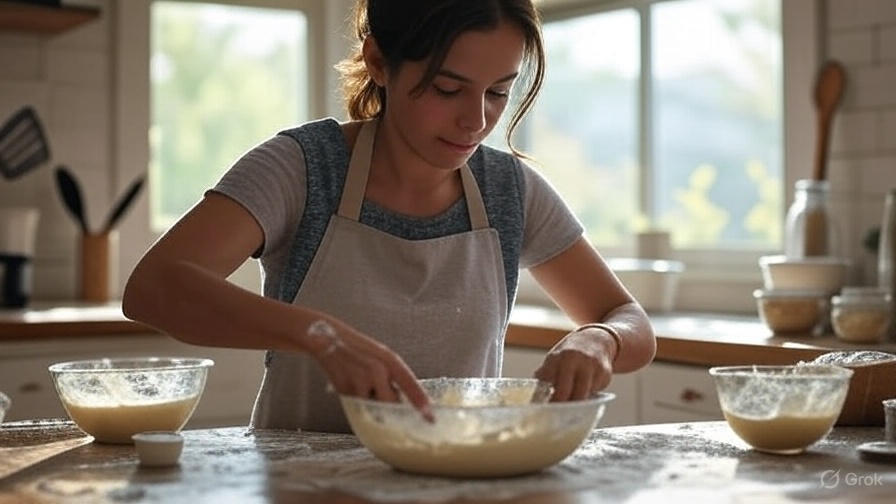
Creating Perfect Vanilla Cake from Scratch
Vanilla cake serves as the foundation for countless variations and decorating possibilities. This classic recipe demonstrates proper technique while producing consistently delicious results.
Gather your ingredients: 2 3/4 cups all-purpose flour, 1 3/4 cups granulated sugar, 1 cup unsalted butter (room temperature), 4 large eggs (room temperature), 1 cup whole milk (room temperature), 2 teaspoons vanilla extract, 2 1/2 teaspoons baking powder, and 1 teaspoon salt.
Preheat your oven to 350°F and position the rack in the center. Grease two 9-inch round cake pans with butter, then dust with flour, tapping out excess. This prevents sticking and ensures easy removal.
Cream the butter in a large bowl using an electric mixer on medium speed for 2-3 minutes until light and fluffy. Gradually add sugar, beating for another 3-4 minutes until the mixture becomes pale and increased in volume. Proper creaming creates the foundation for light texture.
Add eggs one at a time, beating well after each addition. The mixture should remain smooth and cohesive. If it appears curdled, continue beating until smooth before adding the next egg. Stir in vanilla extract.
Whisk together flour, baking powder, and salt in a separate bowl. Add one-third of the flour mixture to the butter mixture, beating on low speed just until combined. Pour in half the milk, mix until just combined, then repeat with remaining flour and milk, ending with flour.
Divide batter evenly between prepared pans, smoothing tops with a spatula. Bake for 25-30 minutes, or until a toothpick inserted in the center comes out clean and the cake springs back when lightly touched.
Cool in pans for 10 minutes, then turn out onto wire racks to cool completely before frosting. This prevents the frosting from melting and ensures clean, professional-looking results.
Mastering Chocolate Cake Techniques
Chocolate cake presents unique challenges and opportunities. Cocoa powder can be acidic, requiring balance with baking soda. Hot liquid often improves chocolate flavor by blooming the cocoa. Oil-based chocolate cakes stay moist longer than butter-based versions.
For rich chocolate cake, combine 1 3/4 cups flour, 2 cups sugar, 3/4 cup cocoa powder, 2 teaspoons baking soda, 1 teaspoon baking powder, and 1 teaspoon salt. In another bowl, whisk 2 eggs, 1 cup buttermilk, 1/2 cup oil, and 2 teaspoons vanilla. Combine wet and dry ingredients, then slowly stir in 1 cup hot coffee or water.
The hot liquid intensifies chocolate flavor while creating incredibly moist texture. Don’t worry about the thin batter – this produces the desired result. Bake at 350°F for 30-35 minutes in greased and floured pans.
Devil’s food cake uses more cocoa and baking soda for deeper color and flavor. German chocolate cake incorporates sweet chocolate and often features coconut-pecan frosting. Each variation requires slight adjustments to achieve optimal results.
Melted chocolate adds richness and fudgy texture. Melt chocolate gently over double boiler or in microwave, stirring frequently. Cool slightly before incorporating into batter to prevent scrambling eggs.
Exploring Fruit-Based Cake Variations
Fresh fruit cakes celebrate seasonal flavors while adding natural moisture and sweetness. Berries, stone fruits, and citrus each require different handling techniques for best results.
Berry cakes benefit from tossing fruit in flour before folding into batter. This prevents berries from sinking to the bottom during baking. Frozen berries work well but should be used straight from freezer to prevent excessive bleeding.
Lemon cake brightens any occasion with its vibrant citrus flavor. Add zest from 2-3 lemons to your basic vanilla cake batter, replace some milk with fresh lemon juice, and consider a lemon glaze for extra brightness. Citrus zest contains oils that provide more flavor than juice alone.
Apple cake works beautifully with spices like cinnamon, nutmeg, and allspice. Dice apples into small pieces and toss with flour to prevent sinking. Applesauce can replace some oil for extra moisture and apple flavor.
Pineapple upside-down cake showcases fruit beautifully. Melt butter with brown sugar in cast iron skillet, arrange pineapple rings over the mixture, then top with yellow cake batter. The caramelized fruit creates stunning presentation when inverted.
Banana cake utilizes overripe bananas for maximum flavor. Mash bananas until smooth, then incorporate into batter. The natural sugars and moisture create incredibly tender cake that stays fresh for days.
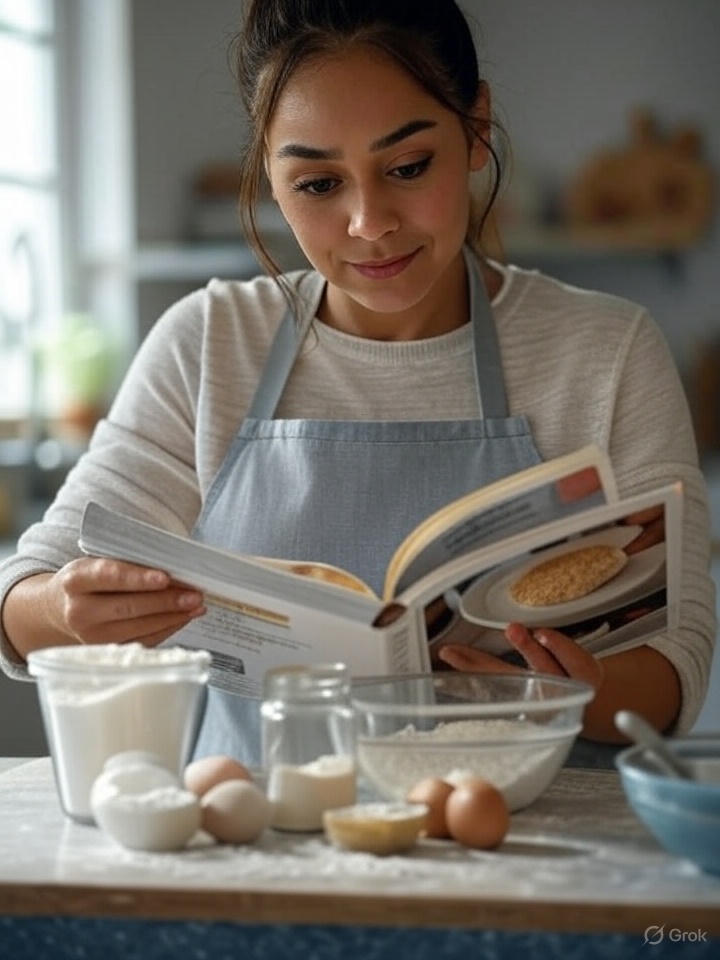
Perfecting Layer Cake Assembly
Layer cakes require patience and technique for professional results. Start with completely cooled cakes to prevent frosting from melting. Level cake layers with a serrated knife or cake leveler for even assembly.
Simple syrup keeps layers moist and adds flavor. Combine equal parts sugar and water, bring to boil, then cool. Add extracts, liqueurs, or fruit juices for variation. Brush each layer lightly with syrup before adding frosting.
Place first layer on serving plate, then spread frosting evenly across the top, leaving a small border. The weight of additional layers will spread frosting to edges. Add second layer, press gently to adhere, then repeat frosting process.
Crumb coat technique ensures smooth final appearance. Apply thin layer of frosting around entire cake, sealing in crumbs. Refrigerate for 30 minutes to set, then apply final frosting layer. This professional technique eliminates messy crumbs in your finished frosting.
Use offset spatula for smooth sides and top. Hold spatula at 45-degree angle against cake side, then turn cake while maintaining steady pressure. For smooth top, hold spatula level and pull across surface in one motion.
Buttercream Frosting Fundamentals
American buttercream combines butter with powdered sugar for sweet, easy frosting. Beat 1 cup softened butter until light, then gradually add 4 cups powdered sugar, 1/4 cup milk, and 2 teaspoons vanilla. Adjust consistency with more milk or sugar as needed.
Swiss meringue buttercream creates silky, less sweet frosting. Whisk 4 egg whites with 1 cup sugar in mixer bowl, then heat over simmering water until mixture reaches 160°F. Return to mixer and whip until cool, then gradually add 1 cup softened butter.
Italian meringue buttercream uses hot sugar syrup for stability. Heat 1 cup sugar with 1/4 cup water to 240°F, then slowly pour into whipping egg whites. Continue whipping until cool, then add butter gradually. This method creates incredibly smooth, stable frosting.
Cream cheese frosting pairs perfectly with carrot cake, red velvet, and spice cakes. Beat 8 oz cream cheese with 1/2 cup butter until smooth, then add 4 cups powdered sugar and 1 teaspoon vanilla. Keep refrigerated due to dairy content.
Flavoring options are limitless. Add melted chocolate for chocolate buttercream, fruit purees for berry flavors, or extracts for various tastes. Coffee buttercream uses espresso or strong coffee, while peanut butter frosting incorporates smooth peanut butter.
Advanced Cake Decorating Techniques
Piping techniques transform simple cakes into elegant desserts. Start with basic round tips for writing and dots, then progress to star tips for rosettes and shells. Leaf tips create realistic foliage, while petal tips make beautiful flowers.
Consistency matters for piping success. Frosting should hold its shape but not be too stiff to pipe smoothly. Add powdered sugar to thicken or milk to thin as needed. Practice on parchment paper before decorating your cake.
Smooth buttercream finish requires proper tools and technique. Use bench scraper or offset spatula to create clean lines. Warm the spatula slightly for ultra-smooth results, wiping clean between passes.
Textured finishes add visual interest without requiring advanced skills. Drag fork tines through frosting for lined texture, or press textured tools into soft frosting. Offset spatula creates beautiful wave patterns when pulled through frosting.
Fresh fruit decorations add natural beauty and flavor. Arrange berries in patterns, fan apple slices, or create flower designs with thinly sliced citrus. Dust with powdered sugar for elegant finishing touch.
Chocolate decorations elevate any cake. Melt chocolate and spread thin on parchment, then cut shapes while still soft. Chocolate curls form by scraping warm chocolate with sharp knife. Ganache drips create dramatic effect when poured over chilled cake.
Troubleshooting Common Cake Problems
Dense, heavy cakes often result from overmixing or incorrect measurements. Mix just until ingredients combine, and measure flour properly by spooning into cup rather than scooping. Too much flour creates dense texture, while too little causes collapse.
Sunken centers indicate underbaking or too much leavening. Test doneness with toothpick and avoid opening oven door too early. Excess baking powder or soda creates rapid rise followed by collapse. Follow recipe measurements precisely.
Dry cakes come from overbaking or insufficient fat. Check oven temperature with thermometer, and don’t exceed recommended baking time. Cakes continue cooking briefly after removal from oven. Proper fat content keeps cakes moist and tender.
Uneven baking results from improper oven placement or temperature variations. Center racks ensure even heat distribution. Rotate pans halfway through baking if your oven has hot spots. Dark pans absorb more heat, requiring temperature reduction.
Cracked tops occur from oven temperature too high or batter too thick. Reduce temperature by 25°F and check batter consistency. Proper creaming incorporates air that allows even rising without cracking.
Sticking problems stem from inadequate pan preparation. Grease thoroughly with butter, then dust with flour, tapping out excess. Parchment paper provides extra insurance for delicate cakes. Cool in pans briefly before turning out.
Storing and Preserving Your Homemade Cakes
Unfrosted cakes keep well wrapped in plastic wrap at room temperature for 2-3 days. For longer storage, wrap tightly and freeze for up to 3 months. Thaw completely before frosting or serving.
Frosted cakes require different storage depending on frosting type. Buttercream-frosted cakes stay fresh at room temperature for 2-3 days if kept covered. Cream cheese frosting requires refrigeration but can sit at room temperature for several hours.
Humid environments affect cake texture and frosting stability. Use airtight containers in humid climates, and consider refrigeration for better preservation. Bring refrigerated cakes to room temperature before serving for best flavor and texture.
Freezing frosted cakes requires careful technique. Freeze uncovered until frosting hardens, then wrap carefully in plastic wrap and aluminum foil. Thaw in refrigerator overnight, then bring to room temperature before serving.
Individual cake slices freeze beautifully for quick desserts. Wrap each slice in plastic wrap, then store in freezer bags. This allows you to enjoy homemade cake anytime without committing to a full cake.
Seasonal Cake Flavors and Variations
Spring cakes celebrate renewal with light, fresh flavors. Lemon cake with berry frosting captures the season’s essence. Strawberry cake uses fresh berries for natural sweetness and beautiful color. Vanilla cake with rosewater frosting offers elegant sophistication.
Summer cakes feature peak fruit flavors. Peach cake celebrates stone fruit season, while mixed berry cake showcases the best of summer’s bounty. Coconut cake provides tropical escape, and key lime cake offers tangy refreshment.
Fall cakes embrace warm spices and harvest flavors. Spice cake with cinnamon buttercream warms the soul. Apple cake with caramel frosting captures autumn’s essence. Pumpkin cake provides seasonal favorite with cream cheese frosting.
Winter cakes offer comfort and celebration. Rich chocolate cake satisfies cold weather cravings. Peppermint cake brings holiday cheer. Gingerbread cake with molasses frosting provides warming spices. Eggnog cake captures holiday traditions.
Each season brings unique ingredient availability and flavor preferences. Adjust recipes to incorporate seasonal produce and spices for cakes that celebrate the time of year.
Healthy Cake Alternatives and Substitutions
Reducing sugar doesn’t mean sacrificing flavor. Natural sweeteners like honey, maple syrup, and fruit purees add sweetness with additional nutrients. Reduce sugar by up to 1/3 in most recipes without major texture changes.
Whole wheat flour substitutes for up to half the all-purpose flour in most recipes. Start with 25% substitution and increase gradually. Whole wheat pastry flour provides lighter texture than regular whole wheat flour.
Oil alternatives include applesauce, mashed banana, or Greek yogurt. These substitutions add moisture while reducing fat content. Replace up to half the oil with these alternatives, adjusting liquid ingredients as needed.
Egg substitutes work for those with allergies or dietary restrictions. Commercial egg replacers follow package directions. Flax eggs (1 tablespoon ground flaxseed mixed with 3 tablespoons water) work well in dense cakes.
Dairy-free options include plant-based milks and vegan butter substitutes. Coconut milk adds richness, while almond milk provides neutral flavor. Ensure all ingredients are truly dairy-free for those with severe allergies.
Gluten-free cake making requires different techniques and ingredients. Use gluten-free flour blends designed for baking, and add xanthan gum if not included. Gluten-free batters often seem different but produce excellent results with proper technique.
Regional Cake Specialties and Cultural Variations
Southern cakes emphasize comfort and tradition. Red velvet cake originated in the South with its distinctive color and cream cheese frosting. Pound cake gets its name from the original recipe using a pound each of butter, sugar, eggs, and flour.
German chocolate cake actually originated in America, named after Sam German who developed the chocolate used in the recipe. The coconut-pecan frosting distinguishes it from other chocolate cakes.
Italian cakes often incorporate almond flavors and lighter textures. Almond cake uses almond flour or extract for distinctive flavor. Ricotta cake provides moist texture and subtle cheese flavor.
French cake techniques emphasize precision and elegance. Genoise sponge cake relies on whipped eggs for leavening. Chiffon cake combines oil and whipped egg whites for light, airy texture.
British cakes include Victoria sponge with jam filling and buttercream. Madeira cake offers dense, buttery texture perfect for afternoon tea. Battenberg cake features distinctive checkered pattern with marzipan covering.
Each region’s specialties reflect local ingredients and cultural preferences. Understanding these variations expands your cake-making repertoire while honoring traditional techniques.
Professional Baking Tips and Secrets
Temperature control affects every aspect of cake baking. Ingredient temperature matters as much as oven temperature. Room temperature ingredients incorporate more easily and create better texture. Cold ingredients can cause curdling or uneven mixing.
Timing precision separates good cakes from great ones. Prepare all ingredients before starting, and follow recipe timing closely. Overmixed batters become tough, while undermixed batters create uneven texture.
Proper measuring techniques ensure consistent results. Use kitchen scale for accuracy, or measure carefully with proper techniques. Level dry ingredients and use clear measuring cups for liquids at eye level.
Oven knowledge improves results dramatically. Learn your oven’s quirks and adjust accordingly. Convection ovens may require temperature reduction and shorter baking times. Some ovens have hot spots that require pan rotation.
Quality ingredients produce better cakes. Use fresh spices, pure vanilla extract, and high-quality chocolate. Expired leavening agents won’t work properly. Fresh eggs and dairy products improve flavor and texture.
Patience during cooling prevents many problems. Resist the urge to unmold hot cakes or frost warm layers. Proper cooling ensures structural integrity and prevents frosting disasters.
Cake Decorating Tools and Equipment
Basic decorating tools include offset spatulas, bench scraper, and piping bags with various tips. These tools handle most decorating tasks and produce professional results with practice.
Turntable makes decorating easier by allowing smooth rotation while applying frosting. Invest in sturdy turntable that won’t wobble under cake weight. Mark measurements on turntable edge for even spacing.
Piping tips create different effects. Round tips work for writing and dots, star tips for rosettes and shells, leaf tips for foliage, and petal tips for flowers. Start with basic set and add specialty tips as skills develop.
Couplers allow tip changes without emptying piping bags. Large couplers work with most tips, while small couplers fit delicate tips. This convenience speeds decorating and encourages experimentation.
Flower nails help create realistic buttercream flowers. Hold parchment paper square on nail while piping flower, then transfer to cake. This technique produces uniform flowers and allows advance preparation.
Stencils create uniform patterns and professional appearance. Make your own stencils from cardboard or purchase professional versions. Dust with powdered sugar or cocoa powder for elegant effects.
Understanding Cake Science and Chemistry
Gluten development affects cake texture dramatically. Flour contains proteins that form gluten when mixed with liquid. Gentle mixing prevents tough, chewy texture while ensuring even distribution.
Leavening reactions create cake rise. Chemical leaveners produce carbon dioxide gas that expands during baking. Understanding these reactions helps troubleshoot problems and adjust recipes.
Sugar’s role extends beyond sweetness. Sugar tenderizes by interfering with gluten development, adds moisture retention, and contributes to browning reactions. Different sugars provide different effects.
Fat contributes to texture and flavor. Butter provides rich flavor and creaming ability. Oil creates moist texture and keeps cakes fresh longer. Shortening produces very tender texture but less flavor.
Eggs provide structure through protein coagulation, emulsification through lecithin, and leavening through air incorporation. Room temperature eggs perform all these functions better than cold eggs.
Heat transfer determines baking success. Proper pan size and material affect heat distribution. Dark pans absorb more heat, while light pans reflect heat. Adjust baking times and temperatures accordingly.
Cake Presentation and Serving Techniques
Presentation elevates homemade cakes to special occasion status. Clean, simple presentations often work better than elaborate decorations. Focus on proportion, color balance, and neat execution.
Cake stands showcase your creation beautifully. Choose stands that complement your cake’s style. Simple glass stands work for most cakes, while ornate stands suit formal occasions.
Proper slicing technique ensures attractive servings. Use sharp, clean knife and wipe between cuts. Warm knife blade slightly for clean cuts through dense cakes or thick frosting.
Serving size considerations affect presentation. Standard servings are smaller than many people expect. Plan 12-16 servings from 9-inch layer cake for dessert portions, fewer for larger celebration servings.
Storage during parties requires planning. Keep cakes covered when not being served, and refrigerate cakes with perishable frostings. Room temperature cakes taste better than cold ones.
Leftover cake handling preserves quality. Wrap individual slices for easy serving later. Freeze excess cake for unexpected guests or future treats. Proper storage maintains freshness and prevents waste.
Scaling Recipes Up and Down
Recipe scaling requires understanding ratios and proportions. Double recipes usually work well, but larger increases may require adjustments. Leavening agents don’t always scale proportionally.
Pan size affects baking time and temperature. Larger pans create thinner layers that bake faster. Smaller pans produce thicker layers requiring longer baking times. Adjust accordingly to prevent over or underbaking.
Mixing capacity limits recipe scaling. Stand mixer bowls have maximum capacity that affects mixing efficiency. Overfilled bowls prevent proper mixing and aeration.
Ingredient availability sometimes limits scaling. Ensure you have enough of all ingredients before starting. Running short during preparation disrupts timing and affects results.
Baking time adjustments depend on pan size changes. Thinner layers bake faster, thicker layers slower. Check doneness early when scaling up, and extend time when scaling down pan sizes.
Frosting quantities should scale with cake size. Layer cakes require more frosting than single layers. Consider decoration complexity when calculating frosting needs.
Specialty Cake Techniques and Styles
Naked cakes showcase layers with minimal frosting between and on sides. This rustic style works well with fruit decorations and casual presentations. Apply frosting between layers but leave sides mostly bare.
Ombre effects create beautiful color gradations. Divide frosting into portions and tint each shade progressively darker or lighter. Apply lightest shade first, then blend darker shades smoothly.
Fault line cakes feature deliberate gaps filled with contrasting elements. Create horizontal gap between layers, then fill with buttercream, ganache, or decorative elements like sprinkles or fruit.
Drip cakes use ganache or glaze dripping down sides for dramatic effect. Chill frosted cake, then pour slightly warm ganache around edges. Control drips by adjusting ganache temperature and consistency.
Textured buttercream creates visual interest without piping skills. Use various tools to create patterns in soft buttercream. Forks, spoons, and offset spatulas all create different textures.
Mirror glazes produce incredibly glossy, reflective surfaces. These advanced techniques require precise temperatures and timing but create stunning professional results.
Cake Storage and Transportation
Transportation requires careful planning to prevent damage. Chill frosted cakes to firm frosting before moving. Use cake boxes or carriers designed for transport. Avoid sudden stops and turns that might shift cake.
Temperature control during transport protects frosting integrity. Cold weather firms buttercream, while heat melts it. Plan accordingly and have backup plans for temperature extremes.
Assembly on-site works for elaborate cakes. Transport components separately and assemble at destination. This prevents damage during transport and ensures perfect presentation.
Secure placement prevents sliding and damage. Use non-slip mats in transport containers. Avoid stacking boxes unless specifically designed for it. Single layer transport works best for most cakes.
Timing coordination ensures fresh cake arrival. Calculate transport time and plan accordingly. Arrive early for setup time, especially for complex assembly or last-minute decorating.
Emergency repair kit includes extra frosting, spatulas, and decorative elements. Minor damage often occurs during transport, but quick repairs can save the day.
Troubleshooting Frosting Issues
Curdled buttercream usually results from temperature issues. If butter was too cold, continue beating until smooth. If mixture is too warm, chill briefly then continue beating. Patience often resolves curdling.
Grainy frosting indicates undissolved sugar. Continue beating longer to dissolve sugar crystals. Powdered sugar dissolves more easily than granulated sugar in frostings.
Thin frosting needs more powdered sugar or less liquid. Add sugar gradually while beating. Chill briefly to firm if needed. Overmixing can also thin frosting by warming it too much.
Stiff frosting requires more liquid or less sugar. Add milk or cream gradually while beating. Warm butter slightly if it was too cold. Proper consistency spreads easily without tearing cake.
Color bleeding occurs when adding liquid colors to buttercream. Use gel or paste colors for vibrant colors without thinning. Add gradually and mix thoroughly for even distribution.
Separation problems in cream cheese frosting come from temperature differences. Ensure cream cheese and butter are same temperature before mixing. Beat thoroughly for smooth consistency.
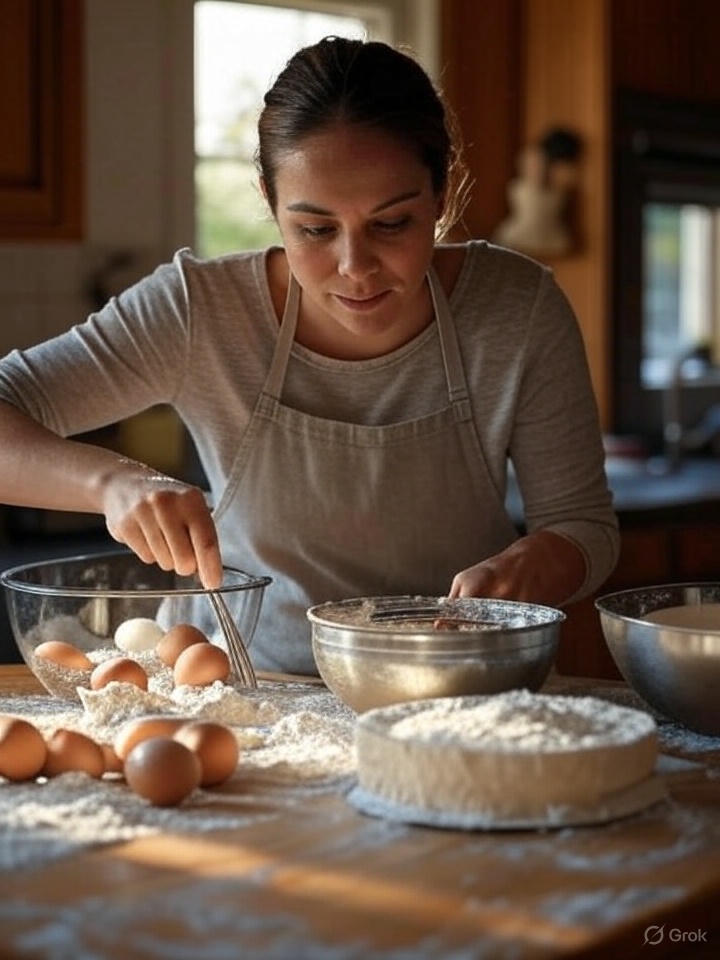
Advanced Flavor Combinations
Complementary flavors create sophisticated taste profiles. Chocolate pairs beautifully with raspberry, orange, or coffee. Vanilla enhances fruit flavors without competing. Spice cakes work well with cream cheese or caramel frostings.
Contrasting flavors provide exciting taste experiences. Sweet and salty combinations like salted caramel gain popularity. Tart and sweet balances create complex, interesting flavors.
Layered flavor experiences build complexity. Use flavored simple syrups, fruit fillings, and complementary frostings. Each component should enhance others without overwhelming the palate.
Seasonal flavor profiles celebrate time of year. Spring calls for light, fresh flavors. Summer showcases peak fruit flavors. Fall embraces warm spices. Winter features rich, comforting tastes.
International influences expand flavor possibilities. Matcha provides earthy, subtle sweetness. Cardamom adds warm, floral notes. Rose water creates elegant, perfumed flavor. Experiment with global ingredients for unique cakes.
Alcohol additions enhance adult cakes. Rum, bourbon, or liqueurs add sophisticated flavors. Cook alcohol into syrups for subtle flavor, or use small amounts in frostings. Balance alcohol with other flavors for best results.
Cake Business and Sharing Considerations
Home baking regulations vary by location. Check local laws before selling homemade cakes. Some areas allow home sales, while others require commercial kitchen certification. Understand liability and insurance requirements.
Pricing homemade cakes requires calculating ingredient costs, time investment, and skill value. Don’t undervalue your work and expertise. Quality homemade cakes command premium prices over store-bought alternatives.
Order management becomes important when baking for others. Confirm details in writing, including flavors, sizes, decorations, and delivery dates. Clear communication prevents misunderstandings and disappointment.
Gift giving with homemade cakes shows care and thoughtfulness. Consider recipient’s preferences and dietary restrictions. Package attractively and include care instructions for best results.
Teaching others cake making skills spreads joy and knowledge. Start with simple recipes and basic techniques. Demonstrate key steps and explain why techniques work. Encourage experimentation and creativity.
Community involvement through baking creates connections. Contribute to bake sales, potlucks, and celebrations. Share your skills at community events and teach others the joy of baking from scratch.
Seasonal Decorating and Presentation Ideas
Spring decorations celebrate renewal and growth. Fresh flowers, pastel colors, and light decorations suit the season. Use real flowers that are pesticide-free and safe for food contact.
Summer presentations showcase abundant fresh fruit. Arrange berries attractively, use fruit in layers, and create colorful displays. Light, fresh decorations suit warm weather entertaining.
Fall decorating embraces rich colors and textures. Warm spices, deep colors, and rustic presentations suit the season. Use seasonal fruits like apples and pears for natural decoration.
Winter celebrations call for elegant, sophisticated decorations. Rich colors, metallic accents, and luxurious textures suit holiday entertaining. Consider evergreen decorations for natural beauty.
Holiday-specific decorations celebrate special occasions. Birthday cakes need personal touches and age-appropriate decorations. Wedding cakes require elegant, romantic styling. Anniversary cakes celebrate milestone moments.
Cultural celebrations inspire unique decorating approaches. Research traditional decorations and flavors for authentic presentations. Respectful cultural appreciation enhances special occasion celebrations.
Conclusion: Your Journey to Cake Mastery
Making cakes from scratch represents both science and art, requiring technical knowledge combined with creative expression. This comprehensive guide provides the foundation for your cake-making journey, from basic techniques to advanced skills that produce professional-quality results.
Success in cake making comes through practice, patience, and willingness to learn from both successes and mistakes. Each cake you create builds skills and confidence, leading to increasingly sophisticated creations that delight family and friends.
The joy of homemade cakes extends beyond the finished product. The process of creating something beautiful and delicious from basic ingredients connects us to generations of bakers who found satisfaction in feeding others. Your kitchen becomes a place of creativity and celebration.
Start with simple recipes and master basic techniques before attempting complex projects. Build your skills gradually, and don’t be discouraged by occasional failures. Even experienced bakers encounter challenges, and problem-solving skills develop through experience.
Quality ingredients and proper technique produce consistently excellent results. Invest in good equipment, follow recipes carefully, and pay attention to details that separate good cakes from exceptional ones. These fundamentals support creative expression and ensure success.
Share your creations generously, as homemade cakes bring joy to others and create lasting memories. Whether celebrating special occasions or simply showing care, your cakes become part of life’s meaningful moments.
The world of cake making offers endless possibilities for learning and growth. New techniques, flavors, and presentations constantly emerge, keeping the craft fresh and exciting. Your journey in cake making will be as rewarding as the delicious results you create.
Embrace the process, celebrate your successes, and continue learning. Your commitment to making cakes from scratch will reward you with delicious results and the satisfaction of creating something truly special with your own hands. The cakes you make today become tomorrow’s cherished memories.

